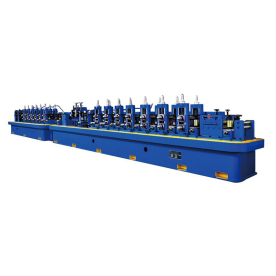[Vertical accumulator]Exploring the Functionality and Advantages of Vertical Accumulators in Modern Industrial Applications
News 2024-9-3
In the fast-paced world of manufacturing and industrial processes, efficiency and productivity are paramount. One of the innovative solutions designed to optimize these aspects is the vertical accumulator. This mechanical device plays a crucial role in various industries, contributing to smoother operations and ensuring that products are delivered promptly without sacrificing quality. In this article, we will explore the functionality, design, and advantages of vertical accumulators, shedding light on why they are becoming increasingly essential in modern industrial applications.
What is a Vertical Accumulator?
A vertical accumulator is a storage device that temporarily holds materials or products within a production line. Unlike traditional horizontal accumulators, which require more floor space, vertical accumulators leverage vertical space to store items. The design of a vertical accumulator often consists of a series of belts or conveyor systems arranged vertically, allowing for a high capacity of items to be stored while occupying a relatively small footprint.

Exploring the Functionality and Advantages of Vertical Accumulators in Modern Industrial Applications
How Does a Vertical Accumulator Work?
Vertical accumulators operate based on a simple yet effective principle: the use of gravity and mechanical movement to transport and store products. When products are fed into the accumulator, they are lifted and stacked in a vertically arranged format, either via a chain conveyor or an elevator mechanism.
As the production process continues, items are collected and stored in layers, maintaining an organized arrangement. When needed, the system can quickly release the stored items back into the production line, ensuring a constant supply for downstream processes.
The use of sensors plays a vital role in the operation of vertical accumulators. They monitor the levels of stored products, allowing for real-time adjustments to the flow of materials. This automation means that vertical accumulators can efficiently respond to changes in production speeds, minimizing bottlenecks and enhancing overall productivity.
Advantages of Vertical Accumulators
1. **Space Efficiency**: One of the most significant benefits of vertical accumulators is their ability to save valuable floor space. By utilizing vertical space instead of horizontal, companies can optimize their layouts and increase operational capacity without the need for larger facilities.
2. **Increased Throughput**: Vertical accumulators allow for better control over production flow, enabling higher throughput rates. By buffering materials between production processes, they minimize downtime and ensure that machines operate at their optimal levels.

Exploring the Functionality and Advantages of Vertical Accumulators in Modern Industrial Applications
4. **Improved Product Handling**: Vertical accumulators can facilitate the handling of fragile or sensitive items, reducing the risk of damage during storage or transport. The gentle movement and controlled environment help maintain product integrity until they are needed in the production line.
5. **Lower Operational Costs**: By minimizing product handling and increasing efficiency, vertical accumulators can lead to lower operational costs over time. Reduced downtime, efficient use of space, and improved workflow contribute to a more sustainable financial model for manufacturers.

Exploring the Functionality and Advantages of Vertical Accumulators in Modern Industrial Applications
Vertical accumulators find extensive use in various industries, including food and beverage, automotive, pharmaceuticals, and consumer goods. In the food industry, for instance, they can be employed to handle packages or bottles as they move through different stages of production, ensuring that the flow remains consistent even when demand fluctuates.
In the automotive industry, vertical accumulators can be used to buffer parts before they reach the assembly line, catering to just-in-time manufacturing strategies. This allows for greater efficiency in handling complex workflows, where various components must be available simultaneously.
Conclusion
As industries strive for greater efficiency, reliability, and productivity, the vertical accumulator emerges as a vital component in the modern manufacturing landscape. Through its innovative design and numerous advantages, it addresses many of the challenges faced by manufacturers today. Businesses looking to enhance their operational efficiency should consider the implementation of vertical accumulators as part of their strategy to optimize production processes and deliver quality products to market.
